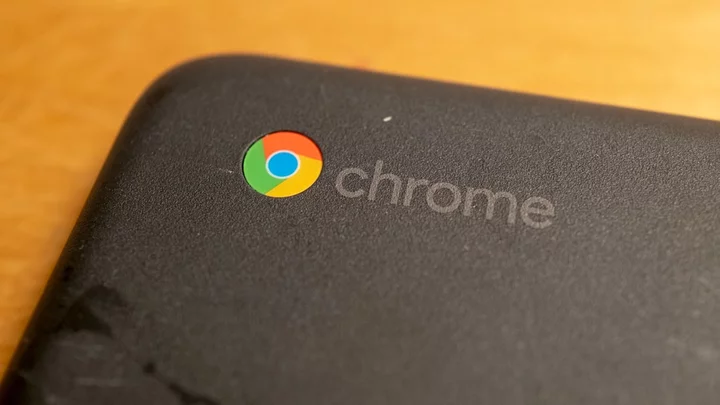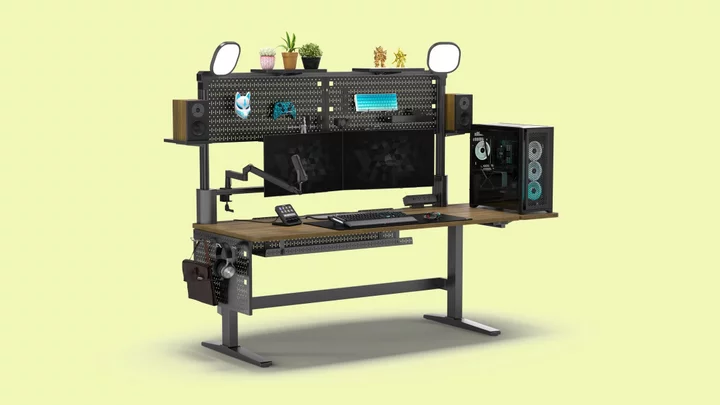It's easier than ever to set up a smart home in which you can remotely control your lights, lawn mowers, thermostats, vacuums, and just about everything else from a smartphone app. Similarly, it's now simple (and relatively affordable) to monitor your home from pretty much anywhere with a smart security system.
Depending on your needs, you can go with a system that you monitor yourself, or pay a subscription fee to have professionals surveil your home 24/7 and contact your local fire or police departments when an alarm triggers. You can even take advantage of on-demand monitoring services when you're away on vacation. Of course, the more coverage you have, the more you should expect to pay.
Here are our top picks, as well as what you need to know before deciding how to secure and monitor your home. We also have a beginner's guide to setting up a smart home if you want to do more than just secure your property. And if you're curious, here's which home security brands our readers prefer.
How to Choose a Home Security SystemWhat Are Home Security Systems and How Do They Work?
A smart home security system connects to your Wi-Fi network so you can monitor and control your security devices via an app. There are many different systems available across a wide range of prices.
Entry-level systems cost the least and usually include some door and window sensors, a motion detector, and a hub that communicates with these devices via one or more wireless protocols such as Wi-Fi, Z-Wave, Zigbee, or a proprietary mesh network. (Matter is another standard to keep an eye on. It has launched and products are arriving slowly.) You can add extra door, motion, and window sensors to provide coverage for your entire house and build a comprehensive system that includes door locks, garage door openers, indoor and outdoor surveillance cameras, lights, sirens, smoke and CO detectors, water sensors, and more.
A word about wireless protocols before we go further: In a perfect world, all home security components would use the same wireless standard to communicate with the main hub, but factors such as power requirements, signal range, price, and size make it virtually impossible to settle on just one. For example, smaller components such as door and window sensors typically use Z-Wave or Zigbee technology because they don't require a lot of power and can run on smaller batteries. They also operate in a mesh topology and can help extend the range of networked devices. However, neither protocol provides the bandwidth that you get with Wi-Fi, which security cameras rely on to provide smooth video streaming, for instance. Moreover, a hub connects and controls Z-Wave and Zigbee devices, whereas you can control Wi-Fi devices on your home network from an app. Finally, Z-Wave and Zigbee devices use AES 128 encryption and operate in a closed system with a dedicated hub, making them more secure than Wi-Fi devices.
ADT Self Setup Home SecurityAny smart security system worth its salt offers components that work together seamlessly and adhere to custom rules. For example, you can create rules to have the lights turn on when a sensor detects motion, have your doors unlock when a smoke alarm goes off, or set a camera to begin recording when a sensor triggers. Some systems store recordings locally on an SD card or a solid-state drive, whereas others offer cloud storage. Local video storage is a good choice for do-it-yourselfers on a budget, but you have to be careful not to overwrite video you might need later. Cloud storage makes it easy to house and access videos, but it can cost hundreds of dollars per year depending on your subscription. Some systems offer both cloud storage and local storage, and some provide a dedicated storage drive that gives you DVR capabilities with time-lapse recording, thus making it easy to find a video event that took place at a specific time.
All of the systems we've tested feature an app that lets you use your smartphone as your command center to arm and disarm the system, create rules, add and remove components, and receive push notifications when alarms trigger. Most apps also allow you to view live and recorded video, lock and unlock doors, change thermostat settings, and silence alarms. Some apps even use your phone's location services to automatically arm and disarm the system based on your physical location. The more expensive systems usually come with a wall-mounted panel that acts as a communications hub, with a touch-screen display that allows you to do everything the app does. The display lets you communicate with a professional monitoring service when an alarm goes off and view video from any of the installed security cameras.
What Is the Best Self-Installed Home Security System?
Do-it-yourself security setups are ideal for budget shoppers because they can save you a bundle on installation charges and subscription fees. Most DIY systems are easy to install and are available as kits that you can configure to suit your needs. As your needs change, you can order additional sensors and other components at your convenience and pair them with the system in a matter of minutes.
A basic, entry-level DIY system might support only one or two wireless protocols and usually offers a limited selection of add-on components, whereas more expensive DIY systems support multiple wireless protocols and are compatible with dozens of add-on components. Some DIY systems are self-monitored: You still receive alerts when devices trigger, but it's up to you to contact the local authorities if there's a break-in or a fire. That said, DIY vendors are increasingly offering professional monitoring services.
For more, see our story on how to build a home security system.
Abode iota All-In-One Security KitWhat Is the Best Professional Home Security System?
Although many systems use wireless components that you install with double-sided tape, some high-end systems use components that require professional installation. These soup-to-nuts systems typically cost considerably more than DIY systems and offer 24/7 professional monitoring, but you may have to enter into a multi-year contract and pay a hefty termination fee if you break it. They usually use touch-screen hubs that contain RF, Wi-Fi, Zigbee, and Z-Wave radios, allowing them to communicate with and control a multitude of components including door and window sensors, door locks, glass break detectors, indoor and outdoor cameras, light switches, motion and water detectors, smoke and CO alarms, thermostats, video doorbells, and a host of other home automation devices.
With a professional monitoring system, an agent will first try to reach you via the two-way control panel before calling your listed phone number if a smoke or intrusion alarm triggers. If you fail to respond, the agent calls 911 to dispatch an emergency responder to your home. The nice thing about professionally installed systems is you don't have to lift a finger; after you place your order, a technician comes to your home, sets everything up for you, and shows you how the system works. It's important to note that, in some areas, you may have to file for a permit to have a security system installed in your home.
Nearly all of the latest DIY and high-end home security systems offer support for voice control via Amazon Alexa, Google Assistant, and, in some cases, Siri. Those voice assistants let you unlock doors, change thermostat settings, open the garage, and arm or disarm your system with a simple command to a connected device like a smart speaker. If you want to stick with Alexa for your smart home security system, make sure to check out our setup guide as well as our explainer on Alexa Guard.
Many also support IFTTT applets, thus letting you configure a floodlight to turn on if your garage door opens (or similar).
For more on DIY vs. professional home security systems, see our story on ADT vs. SimpliSafe.
What Is the Best Home Security System Without a Monthly Fee?
Whether you decide to go with a DIY system or opt for a professionally installed system, you have to pay a monthly or annual fee if you require monitoring and, in some cases, you need to pay a monthly fee to offset hardware costs as well. With most DIY systems, such as the SimpliSafe Home Security Kit and the Ring Alarm Security Kit, you purchase the hardware outright and can avoid any monthly fees if you decide to self-monitor. If you add monitoring, fees vary: SimpliSafe charges $14.99 per month for its no-contract monitoring service, for instance.
Monitoring for professionally installed systems tends to be more expensive. We detail these prices in each of our reviews.
Vivint Smart HomeWhat Is the Best Affordable Home Security Camera System?
If you live in a small apartment and want to keep tabs on things when you're not home, a security camera can get the job done for a lot less money than a full security system. Nearly all standalone security cameras connect to your home's Wi-Fi so you can see what's going on from your phone or tablet. Most also have built-in sensors that can detect motion or sound and subsequently send you a notification of those events. You can usually tweak the camera's motion sensitivity to prevent false alarms due to pet activity or passing cars if the camera is near a window, as well as create a schedule that turns the sensors on or off during certain hours of the day.
Some of the more expensive cameras feature humidity and temperature sensors, plus interact with other connected home devices such as thermostats and smart lighting systems. If you want to save some money and not pay a monthly fee, look for a camera with an SD card slot that allows you to record video when motion or sound events occur; just remember to back up your recordings every so often before the camera overwrites them. Alternatively, look for a camera that offers a cloud storage plan.
An outdoor camera is ideal for keeping an eye on what's happening outside of your home. These devices are weatherproof and typically require a nearby ground fault circuit interrupter (GFCI) outlet to supply power, although a handful of battery-powered models are also available. As with their indoor counterparts, outdoor cameras connect to your Wi-Fi network and allow you to view live video from your phone. They are fairly easy to install but, if you're not familiar or comfortable with electrical wiring, you may want to hire a professional electrician for the setup.
Most outdoor cameras offer motion detection with push and email notifications, night vision, and cloud storage for event-triggered video. Some pull double duty as floodlights or porch lights. Other models can even tell the difference between a passing car, an animal, and a person. Look for an outdoor camera that integrates with other smart home devices such as garage door openers, external sirens, and smart switches.
What Is the Best Video Doorbell?
Video doorbells offer an easy way to see who is on your front steps without having to open or even get close to the door. These devices connect to your Wi-Fi network and send an alert when someone approaches your doorway. They record video when someone presses the doorbell or when they detect motion, plus usually offer two-way audio communication so you can speak with the visitor remotely from your phone.
Most video doorbells use your existing doorbell wiring (two low-voltage wires) and are fairly easy to install, but battery-powered models install in minutes. Some work with other smart devices such as door locks and sirens, plus support Alexa voice commands and IFTTT.
Look for a model that offers a high resolution (1080p), a wide-angle lens (140 to 180 degrees), a night vision range of up to 30 feet, and affordable cloud storage for recordings. Sometimes it's helpful to be able to see what happened just before or after a visitor approaches your door. For that, you need a doorbell that uses pre-buffering to record the action that occurs before someone presses a doorbell or sets off the motion sensor.
Ring Video DoorbellAre Smart Locks Worth the Money?
A smart lock is typically part of a robust smart home security setup, but you don't have to invest in a full-blown system to use one. If you use a home automation hub to control things like lighting and thermostats, you can add a Z-Wave or Zigbee smart lock to the system without much effort. Alternately, if you don't have a home automation hub, look for a Wi-Fi or Bluetooth lock that comes with a mobile app. Smart locks use standard pre-drilled holes and are fairly easy to install. Some models use your existing keyed cylinder and deadbolt hardware to attach to the inside of your door, whereas others require you to remove your existing interior and exterior escutcheons as well as replace the deadbolt and strike hardware. (The former type is ideal for renters.)
You can open or close smart locks via a mobile app and most models can notify you when someone locks or unlocks a door. Many smart locks even allow you to create permanent and temporary access schedules for family members and friends based on specific hours of the day and days of the week. Features to look for include geofencing (uses your phone's location services to lock and unlock the door), voice activation (via Alexa, Google Assistant, or Siri), support for IFTTT, and the ability to integrate with other smart home devices.
Plenty of smart lock models are available, including keyless no-touch locks, touch-screen locks, combination keyed and touchpad locks, and locks you can open via a biometric fingerprint reader.
Yale Assure Lock 2Can You Hack a Home Security System?
Like any product that connects to the internet and uses wireless technology, smart home security systems (particularly those that lack encryption) are vulnerable to hacking. Hackers can sit outside your home and use a laptop and software to intercept wireless signals coming from your system, thus allowing them to suppress alarms and disable sensors. Other devices allow hackers to generate radio noise that can jam communications between the sensors and the hub.
Additionally, malicious actors can hack devices that connect via Wi-Fi, such as security cameras and smart door locks, to gain access to your home network. A skilled hacker can then use your Wi-Fi devices and other network resources to carry out Distributed Denial of Service (DDoS) attacks against larger networks. Perhaps even more disturbing is the idea of some stranger monitoring video from your indoor and outdoor security cameras.
You can take several steps to make sure your home security system is safe from cyber intruders. For starters, you can replace the system's default password with a unique one that contains a mix of letters, numbers, and symbols. If possible, change your password from time to time. Additionally, make sure your home network is secure. Check the security settings on your wireless router and consider models that add an extra layer of software protection.
Some security system vendors use frequency hopping tech to prevent signal jamming, whereas others use embedded encryption, but neither feature is standard; check with the manufacturer if you require an extra layer of security.
In addition, keep an eye on your camera access logs. If you notice camera activity at odd hours or at times when you know that nobody is at home, it may be an indication of a system compromise. Finally, make sure your system software and all of your connected devices are up to date. Firmware updates often address security issues and can help protect your system from infiltration.









